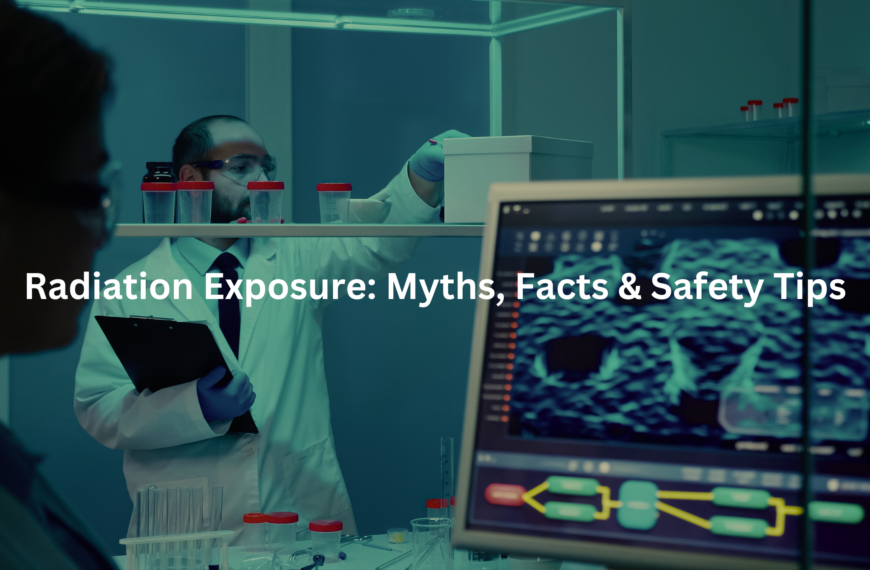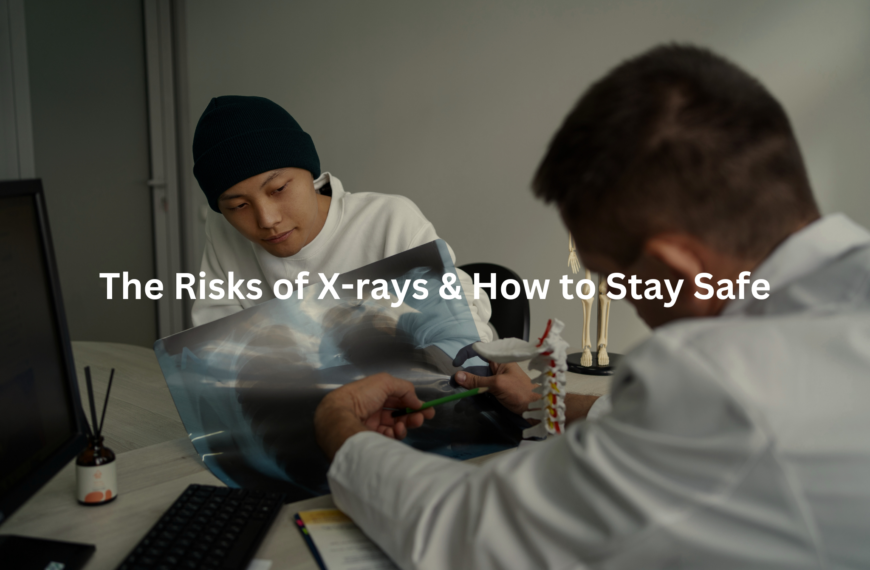This article explains contrast material safety, risks, and alternatives in medical imaging. Learn about its effects and patient preparation.
Contrast material safety, particularly in medical imaging like MRI and CT scans, is a primary concern. Worries about contrast dye often arise, especially concerning potential risks during procedures.
Reactions, though infrequent, are possible. Medical professionals evaluate patient risks, such as allergies, before administration. Gadolinium (for MRI) and iodine (for CT) are commonly used, but necessary precautions include assessing kidney function, as the kidneys facilitate contrast removal.
Adequate hydration aids in eliminating contrast from the body after the scan. A complete medical history can minimise risks.
Key Takeaway
- Contrast agents can help improve imaging but come with risks.
- Knowing about iodine allergies and kidney function is crucial.
- Alternatives to contrast agents exist and can be safer for some patients.
Contrast Dye Safety
The use of iodinated contrast media is pretty common in medical imaging these days. You see them used in CT scans and angiography. However, just because they’re common doesn’t mean you don’t have to be careful.
The Royal Australian and New Zealand College of Radiologists, RANZCR, and their guidelines are really the cornerstone here. It’s their way of making sure everyone’s singing from the same hymn sheet when it comes to patient safety and contrast agents. These guidelines aren’t just suggestions, they’re the best practice, the gold standard if you will.
These guidelines focus on:
- Patient assessment: Check for allergies, kidney function (a big one!), and medications, and the patient’s hydration status.
- Contrast administration: How much to use, how fast to inject it, and what sort of monitoring is needed.
- Reaction management: From mild reactions (like that warm feeling) to the more serious ones (breathing difficulties, cardiac arrest and anaphylaxis).
Mild reactions? Yeah, that flushed feeling after a contrast injection is pretty standard. It’s just the body reacting to the foreign substance, the contrast. But that doesn’t mean the medical staff just brushes it off. They’ve still got to keep an eye on things, make sure it doesn’t escalate.
The real worry is the potential for anaphylaxis (a severe, potentially life-threatening allergic reaction). You need a crash cart ready, an accessible airway, and all hands on deck, just in case. Therefore, you can see where the RANZCR guidelines come in.
So, the practical takeaway? If you’re ever involved in administering contrast, know those RANZCR guidelines inside and out. They’re there to protect everyone involved.
Risks of Contrast Agents
You’ve got to be aware of the potential downsides, no doubt. While contrast agents do make images crisper, it’s important to be mindful of the potential risks involved. There are acute reactions which happen right away, or delayed reactions that can take a while to appear; the latter one is often a bit tricky to diagnose.
Here’s a quick breakdown of what to look out for:
- Acute Reactions: The warm flush, the slight nausea? Fairly common. But watch out for the serious stuff like breathing difficulties, swelling, or a drop in blood pressure.
- Delayed Reactions: Rashes, hives, itching… these can pop up hours or even days later. They may not be as dramatic as an acute reaction, but they can still be quite annoying to deal with.
- Contrast-Induced Acute Kidney Injury (CI-AKI): A bit of a controversial one. Some research suggests the risk might not be as high as once thought, but still, you’ve got to keep an eye on kidney function, especially in patients with pre-existing kidney issues. Pre-hydration is key for preventing this.
Iodine Allergies
Here’s where things get a bit muddled. People often mistake reactions to contrast dye for iodine allergies, but that’s rarely the case. The culprit is often the other additives in the contrast agent itself, not the iodine. The confusion isn’t that surprising, though. Patients aren’t always aware of the specific ingredients in these agents.
It really highlights the importance of clear communication between patient and doctor. A detailed allergy history is a must. [1]
Gadolinium Safety

Gadolinium-based contrast agents used in MRIs also come with their own set of concerns, especially for people with kidney problems. In rare instances, a serious condition called nephrogenic systemic fibrosis (NSF) can develop. It’s a nasty disease that affects the skin, joints, and internal organs, so you need to take it seriously.
The medical community really emphasises checking kidney function before administering gadolinium. If a patient has impaired kidney function, alternative imaging techniques should be considered if possible.
Therefore, all this boils down to one thing: you’ve got to be careful. Be aware of the potential risks. Take a thorough patient history. Monitor kidney function. And always be prepared to deal with a reaction, should one occur. It is a balance of benefits and risks, and the benefits usually outweigh the risks when used wisely.
Managing Contrast Dye Risks
RANZCR, bless their cotton socks, have put together a pretty comprehensive plan to keep people safe when using these contrast agents. The emphasis is on mitigating the risks involved in their administration, because they are an invasive substance. Being proactive is the way to go.
Here’s what RANZCR recommends:
- Non-ionic Contrast Agents: These are the bee’s knees because they are less likely to cause allergic reactions. So, they’re generally the go-to choice.
- Supervision: Medical professionals need to keep a close eye on patients during and after contrast administration. If something goes south, they can jump in quickly.
- Emergency Equipment: A fully stocked crash cart with emergency drugs and equipment is a must. Better to have it and not need it, as they say.
- Premedication: For patients with a history of reactions, premedication (like antihistamines or steroids) might be considered. [2]
It is like being prepared for a storm, but that’s because you’re working with potent chemicals that can have strong effects.
Kidney Function and Contrast
Kidneys, as mentioned previously, and contrast agents have a complicated relationship. It’s long been thought that the contrast agents harm the kidney, but this may not be the truth. It’s still important to be certain that the kidneys work well, and that the body will be able to process the agents without issue.
Doctors need to keep an eye on kidney function, preferably by measuring things like eGFR (estimated glomerular filtration rate) or creatinine levels. These give a good indication of how well the kidneys are functioning. Dehydration is a significant issue, so keeping the patient hydrated can help mitigate the risks involved.
Contrast-Related Side Effects
Side effects are pretty common after contrast administration, but most of them are pretty mild. The warmth, the slight nausea, maybe a bit of a funny taste in your mouth is to be expected. However, more serious reactions can occur. Hives, rashes, itching are all things to watch out for.
The important thing is to be aware of the possible side effects and to let your doctor know if you experience anything unusual after getting contrast. It’s better to be safe than sorry.
Therefore, preparation is key. Have a plan in place, understand the risks, and be ready to deal with any potential complications. That’s the secret to using contrast agents safely and effectively.
Patient Preparation for Contrast Dye
Credits: RAYUS Radiology
Before you even get near the contrast agent, there’s a bit of prep work to be done. The RANZCR guidelines are quite clear on this point; it’s all about minimising risks and ensuring the procedure goes as smoothly as possible. The aim is to make sure that you as the patient is ready to be exposed to the agents.
Here’s a patient’s checklist:
- Risk Factor Assessment: Doctors need to have a good hard look at your medical history. That includes kidney function, allergies, and any other potential risk factors. If you’ve had bad reactions before, it’s important to tell them, even if it was a long time ago.
- Hydration is Key: Drink plenty of water before your appointment! Staying hydrated helps your kidneys flush out the contrast agent afterwards. Think of it as giving your kidneys a bit of a helping hand. The more the better, and this really applies to any medical intervention.
- Post-Procedure Monitoring: That cannula (the little tube they put in your arm) needs to stay in for a little while after the contrast is administered. This allows the medical staff to keep an eye out for any immediate reactions.
Ultimately, the point of all this preparation is to put you at ease. Knowing what to expect and understanding the steps being taken to ensure your safety can make a big difference.
Contrast vs Non-Contrast Imaging
The decision to use contrast isn’t always straightforward. It’s a bit of a balancing act, weighing the potential benefits against the possible risks. The decision really depends on what the doctor is trying to find in the images.
Sometimes, contrast agents can significantly enhance the visibility of certain structures or abnormalities. Other times, they might not add much value, or the risks might outweigh the potential benefits. It is a risk-benefit ratio for the doctors to calculate.
A few considerations:
- Diagnostic Value: Will contrast actually improve the image quality and help in making a diagnosis?
- Patient History: Any prior reactions to contrast? Kidney problems? Allergies?
- Alternative Imaging: Are there other imaging techniques that don’t require contrast?
If a patient has a history of adverse reactions to contrast, the doctor might opt for non-contrast imaging. It depends on what they’re looking for. Sometimes, the information you get from a contrast-enhanced scan is worth the risk. Other times, it’s not.
In short, the decision to use contrast is a shared one, between the doctor and the patient. Make sure you have all the information you need to make an informed choice.
FAQ
What are gadolinium-based contrast agents and how are they used in MRI scans?
Gadolinium-based contrast agents help make certain tissues and blood vessels show up better on MRI scans. These special dyes are injected into your vein before the scan. They work by changing how your body tissues react to the magnetic field, making problem areas easier to see.
Your radiologist will determine if you need contrast for your scan based on what they’re looking for. Most people handle these agents well, but your doctor will check if they’re right for you.
How do iodinated contrast media affect people with renal impairment or risk of contrast-induced nephropathy?
Iodinated contrast media can sometimes cause problems for people with kidney issues. Contrast-induced nephropathy happens when contrast material temporarily hurts kidney function.
Before your scan, doctors measure your creatinine levels and eGFR to check your kidney health. If you have kidney problems, your doctor might choose a lower dose, use hydration protocols (giving you extra fluids), or pick a different test. People with diabetes may need special care, including temporary metformin discontinuation before and after the procedure.
What types of hypersensitivity reactions can occur with contrast media, including anaphylaxis?
Contrast materials can trigger various reactions in some people. Mild reactions include maculopapular rash, urticaria (hives), and feeling warm. More serious reactions might involve angioedema (swelling), bronchospasm (trouble breathing), or laryngeal oedema (throat swelling).
Anaphylaxis is the most severe reaction and can be life-threatening. Reactions can happen right away or as delayed reactions hours or days later. Imaging centres keep emergency treatment protocols ready, including adrenaline administration and intravenous fluids for serious cases.
How are patients monitored during contrast administration to ensure safety?
During contrast administration, staff carefully watch for any signs of problems. This includes blood pressure monitoring and checking oxygen saturation levels. Radiologist supervision is required throughout the procedure.
Staff watch for signs of contrast media extravasation (when contrast leaks into surrounding tissue). Post-procedure monitoring continues for a short time after your scan. Patients with higher risk factors, like asthmatic patients or those with previous reactions, get extra attention. These safety measures are part of standard radiology department protocols.
What premedication options exist for patients with contrast allergy history?
If you’ve had reactions to contrast before, your doctor might recommend premedication before your next scan. Common options include corticosteroids (like prednisone) taken 12-24 hours before your appointment, and diphenhydramine (an antihistamine) taken shortly before.
These medicines help reduce the chance of another reaction. For high-risk patients, a combination of medicines might be used. Your doctor will create a plan based on your past reactions and current health. Always tell your imaging team about any previous contrast reactions.
Conclusion
Contrast material safety is key in medical imaging, it’s a given. Iodinated contrast and gadolinium offer benefits, but come with risks. Doctors need to assess patients, prepare them properly, and consider alternatives if they are available. Patients deserve to be informed and feel safe, no matter what choice is made. Ultimately, it’s about making informed decisions for health and well-being.
References
- https://www.backtable.com/shows/vi/articles/iodine-contrast-allergy-definition
- https://www.ranzcr.com/search/contrast-guideline-anaphylaxis-point-of-care-tool




